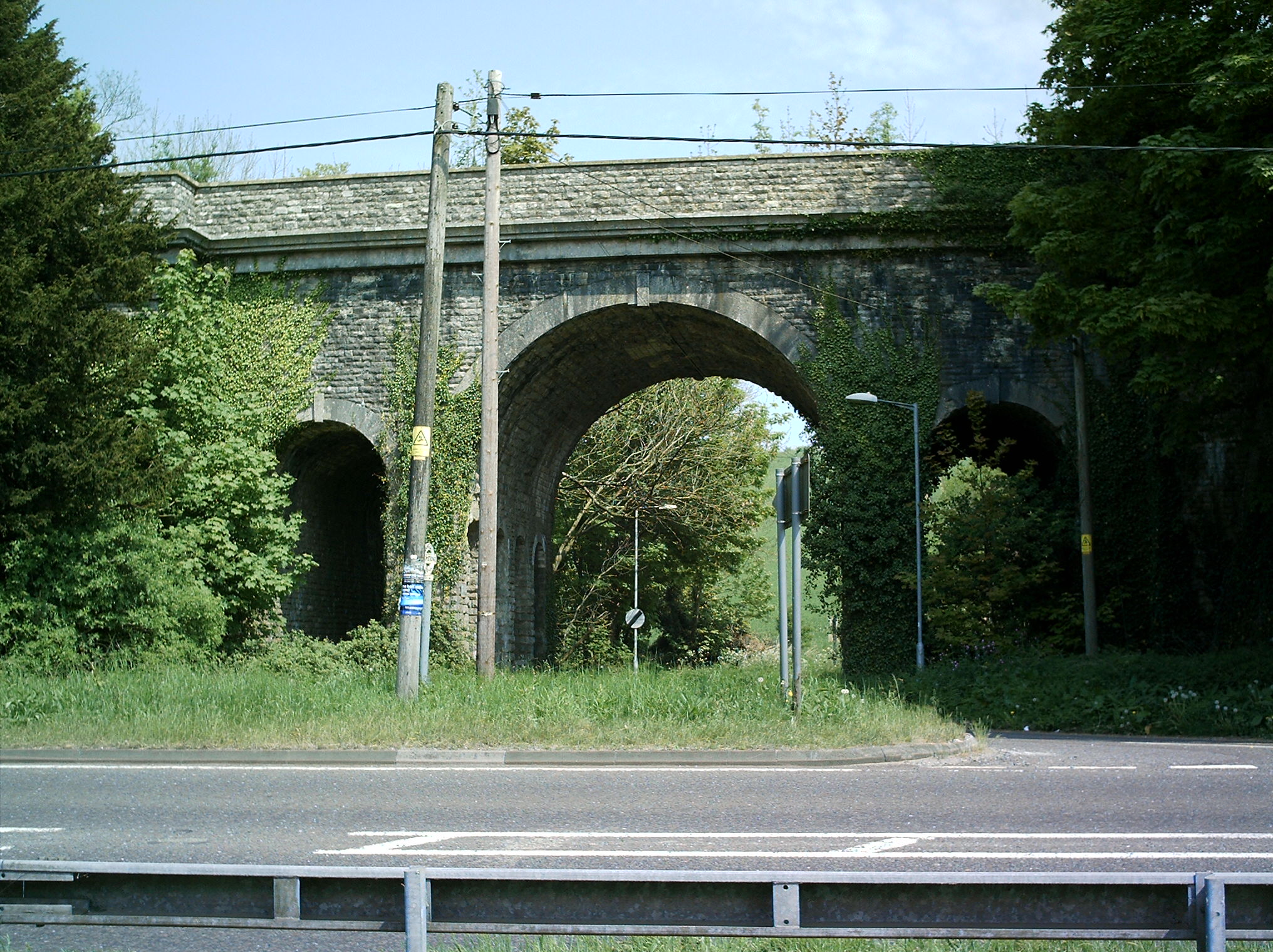Grimstone Viaduct on:
[Wikipedia]
[Google]
[Amazon]

 Grimstone Viaduct is a railway bridge at Grimstone (near Dorchester) in Dorset, south-western England. It carries the
Grimstone Viaduct is a railway bridge at Grimstone (near Dorchester) in Dorset, south-western England. It carries the
Heart of Wessex Line
The Heart of Wessex Line, also known as the Bristol to Weymouth Line, is a railway line that runs from to and Weymouth in England. It shares the Wessex Main Line as far as Westbury and then follows the course of the Reading to Taunton Line ...
over a road junction off the A37 road
The A37 is a major road in south west England.
Route
It runs north from the A35 road, A35 at Dorchester, Dorset, Dorchester in Dorset into Somerset through Yeovil and Shepton Mallet before terminating at the Three Lamps junction with the A4 ro ...
. It is directly north of the site of the closed Grimstone and Frampton railway station.
History
The viaduct was built for theWilts, Somerset and Weymouth Railway
The Wilts, Somerset and Weymouth Railway (WS&WR) was an early railway company in south-western England. It obtained an act of Parliament giving powers to build the line in 1845 to build a railway from near Chippenham in Wiltshire, southward to ...
(WSWR) whose line provided a connection between the ports of Bristol
Bristol () is a City status in the United Kingdom, cathedral city, unitary authority area and ceremonial county in South West England, the most populous city in the region. Built around the River Avon, Bristol, River Avon, it is bordered by t ...
(on the west coast) and Weymouth on the south. The WSWR was under the influence of the Great Western Railway
The Great Western Railway (GWR) was a History of rail transport in Great Britain, British railway company that linked London with the southwest, west and West Midlands (region), West Midlands of England and most of Wales. It was founded in 1833, ...
(GWR). Thus, the viaduct was designed by the GWR's chief engineer, Isambard Kingdom Brunel
Isambard Kingdom Brunel ( ; 9 April 1806 – 15 September 1859) was an English civil engineer and mechanical engineer who is considered "one of the most ingenious and prolific figures in engineering history", "one of the 19th-century engi ...
. It opened in 1857.
Description
The bridge is built in a classical style. It carries the railway over a road junction just off theA37 road
The A37 is a major road in south west England.
Route
It runs north from the A35 road, A35 at Dorchester, Dorset, Dorchester in Dorset into Somerset through Yeovil and Shepton Mallet before terminating at the Three Lamps junction with the A4 ro ...
and a stream. It consists of three arches—the central arch, spanning the road, is round-headed and much the largest. It is flanked by a smaller arch on each side, one of which spans Sydling Water, a minor river. The piers of the main arch contain four relieving arches, all round-headed and similar to the flanking arches; the outer arches are heavier and square. The whole structure is built from blocks of stone and faced with rock. The arches have ashlar
Ashlar () is a cut and dressed rock (geology), stone, worked using a chisel to achieve a specific form, typically rectangular in shape. The term can also refer to a structure built from such stones.
Ashlar is the finest stone masonry unit, a ...
stone voussoir
A voussoir ( UK: ; US: ) is a wedge-shaped element, typically a stone, which is used in building an arch or vault.“Voussoir, N., Pronunciation.” Oxford English Dictionary, Oxford UP, June 2024, https://doi.org/10.1093/OED/7553486115. Acces ...
s, above which is a moulded cornice
In architecture, a cornice (from the Italian ''cornice'' meaning "ledge") is generally any horizontal decorative Moulding (decorative), moulding that crowns a building or furniture element—for example, the cornice over a door or window, ar ...
and band course
A course is a layer of the same unit running horizontally in a wall. It can also be defined as a continuous row of any masonry unit such as bricks, concrete masonry units (CMU), stone, shingles, tiles, etc.
Coursed masonry construction arranges un ...
(a line of decorative stonework), surmounted by a low parapet
A parapet is a barrier that is an upward extension of a wall at the edge of a roof, terrace, balcony, walkway or other structure. The word comes ultimately from the Italian ''parapetto'' (''parare'' 'to cover/defend' and ''petto'' 'chest/brea ...
. The surrounding embankment
Embankment may refer to:
Geology and geography
* A levee, an artificial bank raised above the immediately surrounding land to redirect or prevent flooding by a river, lake or sea
* Embankment (earthworks), a raised bank to carry a road, railway ...
is retained by substantial wing wall
A wing wall (also "wingwall" or "wing-wall") is a smaller wall attached or next to a larger wall or structure.
Bridges
In a bridge, the wing walls are adjacent to the abutments and act as retaining walls. They are generally constructed of the same ...
s, curved and coped to form a revetment
A revetment in stream restoration, river engineering or coastal engineering is a facing of impact-resistant material (such as stone, concrete, sandbags, or wooden piles) applied to a bank or wall in order to absorb the energy of incoming water an ...
.
The viaduct is a Grade II listed building
In the United Kingdom, a listed building is a structure of particular architectural or historic interest deserving of special protection. Such buildings are placed on one of the four statutory lists maintained by Historic England in England, Hi ...
, first designated on 20 May 1985. Listed status provides it with legal protection.
References
{{Coord, 50, 44, 56.9, N, 2, 30, 42.3, W, type:landmark, display=title Railway viaducts in Dorset Grade II listed bridges Grade II listed buildings in Dorset